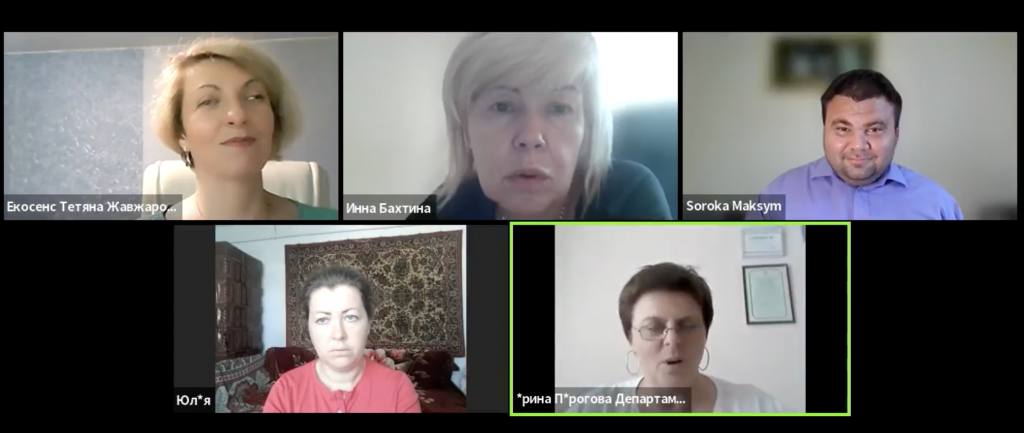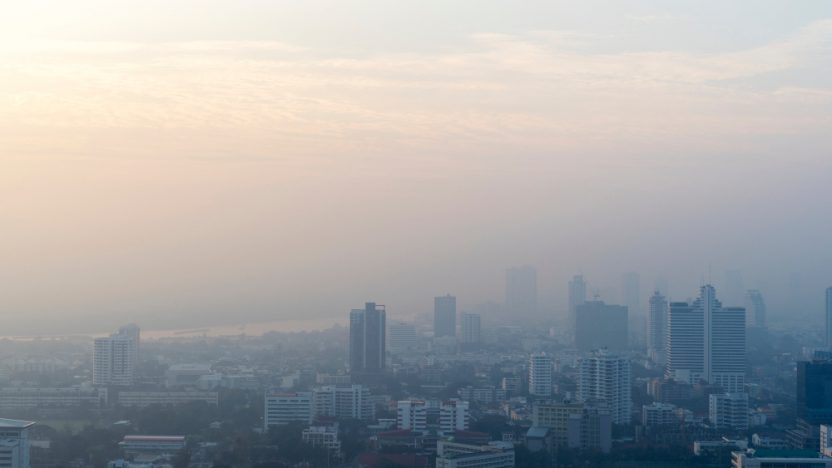EcoSense NGO, together with experts of the Dovkola Network, conducted an analytical study on the impact of a year of active hostilities and a difficult heating season on air quality in Zaporizhzhia. In addition, it determines the effects of the destruction of the Kakhovka Reservoir and the causes of the smell that Zaporizhzhia residents have been complaining about.
The study was conducted as part of the Environmental Policy and Advocacy Initiative for Ukraine implemented by the International Renaissance Foundation with financial support from Sweden.
The authors of the study, Yuliia Bailiuk and Maksym Soroka, experts in environmental safety and members of the Dovkola Network, tested the hypothesis of increased air pollution during the heating season of 2022/2023 due to heating with solid fuel boilers and generator emissions, compared the air quality of the city agglomeration with the pre-war period.
Changes in the content of common pollutants in the air were analysed, including fine PM2.5 and PM10 dust, nitrogen dioxide NO2, carbon dioxide CO and surface ozone O3. In addition, the study determined the impact on air quality of other pollutants common for industrial agglomeration such as volatile organic compounds VOC, ammonia NH3 and general odour in the air.

Continuous data from stations of EcoCity, the Ukrainian network of public air quality monitoring, in locations of the Zaporizhzhia agglomeration were considered. Today, 22 stations operate in the city.
Although Zaporizhzhia residents actively complain about air pollution, the conclusions are unexpected:
“Air quality in Zaporizhzhia has improved since February 2022. But we must understand that this is an accidental consequence of the war and a temporary phenomenon. When forming a plan for a phased reduction of emissions, we have to take into account temporary reductions in production and the volume of emissions that are not indicative of modernisation or achievement of clean air goals. This fact can and will be used for manipulations and misrepresentations surrounding the issue of air quality management in the agglomeration,” said Maksym Soroka, Environmental Safety Specialist. “We have to act upon the assumption that during the recovery phase of Ukraine, the volume of emissions will be greater than in the pre-war period. Therefore, for the purposes of air quality planning and management in agglomerations, a wider retrospective period of air quality monitoring should be used, going back to at least 2016.”
According to the expert, the main focus of agglomeration air quality management should be on the sources of metallurgy, coke-chemical production and large incineration plants. Sustainable and low-carbon transport, alternative energy and other green measures should be auxiliary measures, in his opinion.
Read all the conclusions of the study by downloading the Analytical Report:
Watch a video recording of the research presentation here.
***
The study was carried out as part of EcoSense’s project “Prompt Response to Environmental Threats for the Population of the Front-Line City of Zaporizhzhia in Conditions of Hostilities” under the Environmental Policy and Advocacy Initiative for Ukraine implemented by the International Renaissance Foundation with financial support from Sweden.
The opinions, conclusions or recommendations are those of the authors of this brochure and do not necessarily reflect the views of the Government of Sweden. The contents of the brochure are the sole responsibility of EcoSense NGO.

